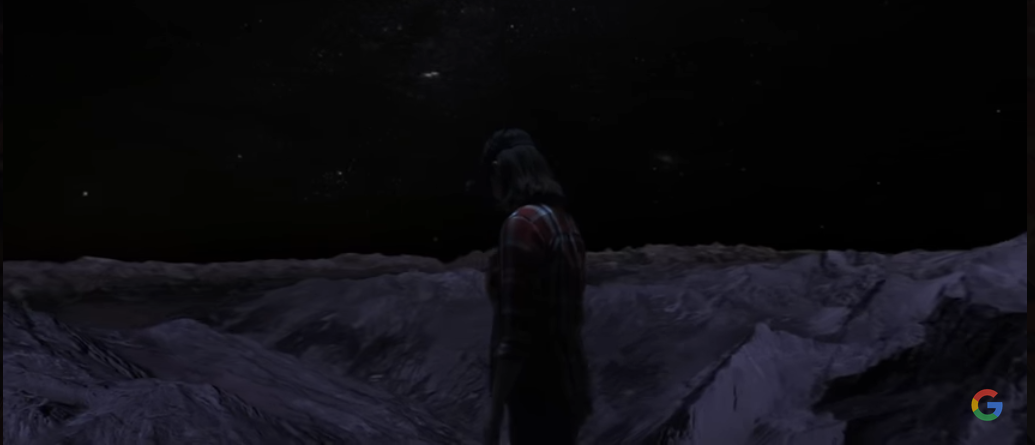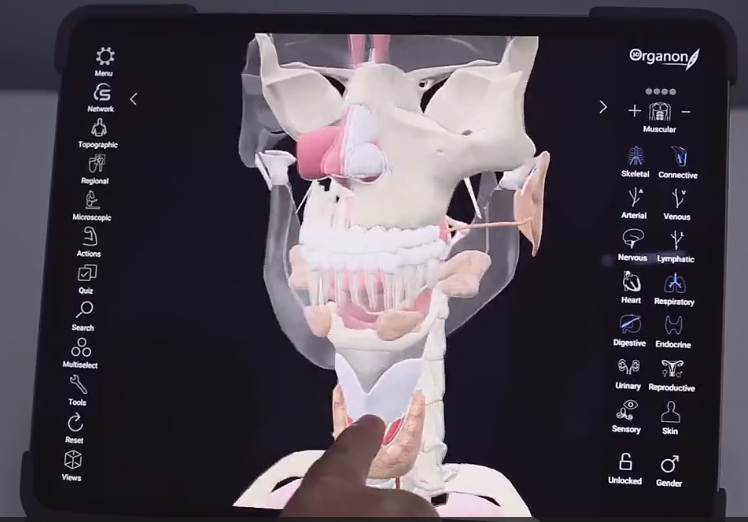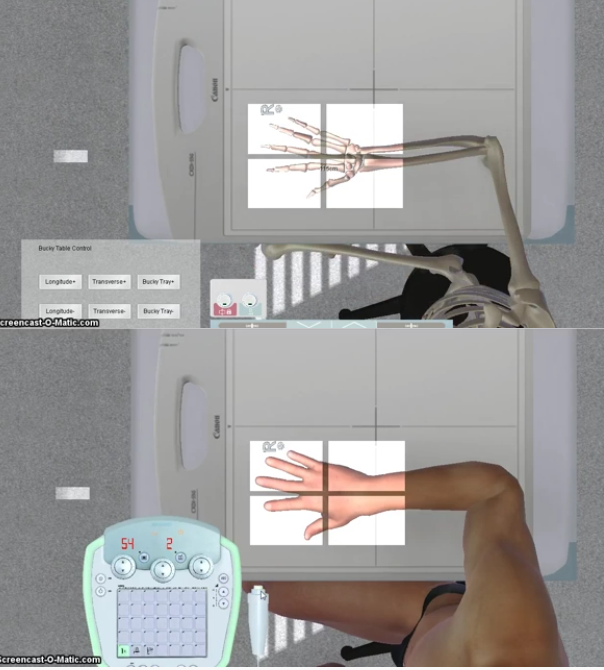Abstract
The article discusses the issues related to the digitalization of higher education, the importance of which has rapidly increased due to the Covid-19 infection spread. The Russian Federation is developing and implementing promising high-tech end-to-end digital technologies in all spheres of the economy, including education supplying the labour market with employees who flexibly and quickly orient in the digital space. The possibilities of using digital technologies in education are presented based on the virtual reality technology when the teacher is replaced by interactive content, and students interact not with a living personality but with a virtual model. The possibilities of virtual reality are used as various kinds of simulators. Teachers also use them to demonstrate processes, phenomena, and objects that are impossible or extremely difficult to show in reality, for example, Google Earth VR and 3D Organ on VR Anatomy projects, 3D-Simodont Dental Trainer. The paper describes the advantages of using virtual reality technologies in teaching students and highlights the difficulties. They are connected with the high cost of equipment and software, together with the user's possible physical discomfort. The author notes that immersive virtual reality cannot replace the humanistic components of the education process, including personal contact between the teacher and the student.
Keywords: Digitalization, higher education, virtual reality
Introduction
In the modern society of digital literacy, education is facing problems that emphasize the need to revise traditional paper-pencil teaching methods. Thanks to digital tools, future jobs are becoming increasingly complex and require higher education institutions graduates to use digital skills to succeed in a rapidly changing information space.
The experience of distance learning acquired during the Covid-19 infection spread has shown that the higher education system in Russia is at the beginning of the digitalization of education.
The main directions of the digital transformation process:
- Individualization of educational experience (Customized Learning Experiences).
- General tendency to read less.
- Increasing accessibility of education.
- Information security.
- Gamification in education (Smirnova, 2021).
The transition from a quantitative state (the increase of digital platforms, mass computerization, and digitization of various processes in diverse fields) to a qualitative one (artificial intelligence, blockchain technologies, working with large databases) has seriously changed the education process around the globe (Konstantinova et al., 2021). Technologies and practices that, according to experts, will have a significant impact on the future of teaching include the use of virtual reality for the student's professional training. Researchers, having studied the possibilities of using virtual reality (VR) in various scenarios of student learning, found out that virtual reality currently has enormous potential, and its application in education is the subject of numerous studies. However, there is little systematic work on applying immersive virtual reality for higher education purposes. Virtual reality is considered an innovative technology for creating an interactive three-dimensional environment, which can be used as one of the innovative pedagogical techniques for actively attracting generation Z students (Srimadhaven et al., 2020). Virtual reality technology can facilitate learning, complement modern educational approaches and provide students with new and exciting means of studying educational content and conducting laboratory work and experiments.
Thanks to technological advances in virtual reality (VR) and augmented reality (AR) (for example, imagination, interaction, and immersion), over the past decade, VR/AR has become a potentially effective tool to help students improve their knowledge and practical skills (Zhou et al., 2020).
The emergence of immersive virtual reality (I-VR) as a pedagogical method in education has called into question the conceptual definition of a learning environment. High-definition graphics and immersive content using displays allowed students to study complex subjects in a specific way that is impossible with traditional teaching methods. However, few research works are devoted to learning outcomes, intervention characteristics, and assessment methods related to I-VR (Hamilton et al., 2021).
Problem Statement
There is a contradiction between the market demands for employees, who flexibly and quickly navigate the digital environment, understand how to use the latest innovative technologies in their professional activities, and the capabilities of a modern higher school to meet the current demands in the training of such personnel.
The problem is that the traditional education system at the university today does not keep up with the changes and needs of the actual labour market. Flexibility is the challenge of the education system because it is the digital transformation in education that requires a flexible approach to the development of educational programs.
Thanks to the availability of the Internet and a large number of students having mobile devices who communicate via the Internet, the communication mode is changing. Information technologies are one of the factors of digital transformation taking place in higher education. Universities are expressing interest in using end-to-end digital technologies to enhance cooperation between students and teachers in the education process. However, not all students have equal opportunities to receive a core education digitally. There are problems of accessing technologies and using them, and the skills and competencies essential to integrate digital tools into teaching practice and learning. It is vital to approach the digital transformation in education as one of the main tasks and think about the possibilities that allow students to manage their digital future. It is necessary to permit teachers to act as leaders in the digital transformation in education.
Research Questions
The paper's subject is the virtual technologies possibilities in higher education.
Purpose of the Studу
The purpose of the study is to describe the world experience of using virtual reality in higher education.
Researchers highlight the problems associated with the use of virtual reality in higher education:
- Virtual reality applications in education are focused on the usability of applications, not on learning outcomes;
- Immersive virtual reality is mainly part of experimental and development work and is not used regularly in real-world training (Radianti et al., 2020).
Research Methods
Research methods: analysis of domestic and foreign pedagogical, educational and methodological literature on the research problem; generalization and systematization of ideas relevant to construct a scientifically-based approach based on the digital technologies inclusion in the system of higher education.
Findings
We know that virtual reality technologies make learning more visual, allow activating educational activities, and involve students in the learning process. People use computer graphics to create a realistic virtual world that can respond to user input. VR in experimental education provides students with an immersive, lifelike, and intuitive experience (Zhang et al., 2020).
For example, a forensic examination model and practical laboratory exercises for describing and analyzing a crime scene use digital devices. The designed immersive virtual reality includes lecture material and a virtual laboratory. Using VR for training allows putting participants in the investigator's place and provides a scenario that resembles a real-world scheme. The experience begins with the CEO's introduction explaining that he believes that there is leakage of information in his company and that the stolen blueprints are still lying in the office. The teacher asks the students to find the stolen blueprints and obtain any relevant evidence for forensic examination (Hassenfeldt et al., 2020).
Google Corporation, working on virtual reality creation, is implementing the Google Earth VR project, constructing an opportunity to see the world's sights from all sides. The Eiffel Tower, the Egyptian Pyramids, and Niagara Falls become available for study in virtual reality. There is a possibility of flying into space and looking at the planet from the height of the space shuttle (Figure 1). Google Earth VR allows a person to change the altitude, movement in space, and time of the day. We can control the program entirely via virtual helmet controllers. The Google Earth VR app is an affordable and convenient way to explore the whole planet without leaving the limits of the house because the program is freely available (Krayushkin, 2021).

An interactive application on human anatomy 3D Organon VR Anatomy has been created for medical students, presenting 15 body systems. A person can study and teach anatomy using more than 10,000 realistic anatomical models with high-quality text descriptions for each body structure (Figure 2). It is possible to visualize the skeletal system, muscles, vessels, nerves, and other organs in 3D (3D Organon VR Anatomy, 2021). Guest access to the application is free for all users, including all 3D models of male and female skeletons and connective tissues; animations of joints and bones are available in the human module "Action".

Currently, dental schools use simulators with realistic mannequins embedded in dental simulated operating rooms. These imitation models allow teachers to explain and improve students' hand-eye coordination and skills. Virtual dental training simulator 3D-Simodont Dental Trainer is a three-dimensional virtual reality (Figure 3). Virtual dental training simulator combines research in tactile technologies by Moog (USA) and the dental training experience at the Academic Center of Dentistry in Amsterdam (ACTA) Academic Center for Dentistry, Amsterdam, the Netherlands, for modeling dental operations for therapeutic purposes.
Simodont Dental Trainer provides the user with instant feedback, allowing students to train in a virtual examination. These contribute to improving the dental students' skillfulness. The authors describe a generally positive attitude towards experiencing tactile sensations to deepen the learning process. However, specialists noted that virtual modeling is advisable to use only as an additional tool combined with traditional teaching methods (Roy et al., 2017).

Simulation is a principal element of teaching radiography to students as it allows developing their clinical skills in a safe environment. Radiologists require profound technological and scientific experience to diagnose diseases correctly. They also need to calculate the radiation dose accurately. Virtual reality is an innovative technology that allows students to practice radiography in a virtual environment, simulating real clinical scenarios. Instead of focusing on mechanical facts memorization, active learning encourages students to perform tasks of high complexity. Students who have practiced limb radiography using VR software do practical tasks better, which can be explained by the internal task deconstruction improvement and the variety of visualization mechanisms available in immersive virtual reality (O'Connor et al., 2021). Virtual modeling tools have become widespread in radiation therapy education over the past decade. For example, MITIE is a 3D VR environment that allows manipulating a patient and X-ray equipment to create an image using VR (Figure 4).

Thus, the immersive approach makes learning more visual, gives the possibility to concentrate on the educational content, and creates an exciting and unusual learning process for students. It turns out to be reliable when conducting dangerous experiments, and it contributes to the gamification of the learning process. However, VR technologies have not become widespread due to the high cost of equipment and VR software and programs development. It is also due to the difficulties of virtual reality human perception adaptation. In practice, the teacher has to use available digital tools and services.
Conclusion
With the advent of digitalization and industry 4.0, higher education has undergone significant changes. In various fields of industry, manufacturing, medicine, and others, specialists widely use simulators to teach new skills. However, conventional simulators cannot often create reality and do not provide the user with the opportunity to experience unexpected or dangerous scenarios. In this regard, virtual reality is the technology that can meet the needs of both academia and industry.
Virtual environments are widely used in educational institutions, demonstrating the potential benefits of teaching and learning while studying. Interactive environments based on virtual reality can offer terrific benefits thanks to an active rather than passive learning mode. Virtual reality has numerous advantages.
Students can access the virtual interface without space and time constraints, allowing them to learn at an individual pace.
In the case of virtual technological equipment, it can be "cut," and students can observe the internal operations of the equipment. These are practically impossible using real physical hardware. Therefore, virtual reality technology can facilitate learning, complement modern educational approaches and provide students with new and exciting learning tools (Saab et al., 2021).
Virtual reality allows users to learn in a safe, controlled, and risk-free environment. These include reproducing and testing various unsafe and dangerous scenarios, which may not be practicable in an actual situation.
The development of learning content can be better, faster, and constantly updated due to the active participation of students, not only as users but also when planning and creating the necessary content.
Virtual reality provides excellent opportunities for creating the use of mutual learning since students' creations in virtual reality can be performed anonymously and evaluated by fellow students (Kumar et al., 2021).
However, VR may not be an attractive educational platform for all users. For many users, immersive virtual reality can only arouse situational interest in the topic and may not contribute to deeper study. In addition, the use of virtual reality devices can cause users’ physical discomfort, including cyber-illness, nausea, headaches, and eye strain.
The question arises: Is VR a "new educational norm" or a "new educational anomaly?" Virtual reality software is a helpful tool for supporting and facilitating education. Though, it is not a panacea that will replace the humanistic components of the education process since personal teacher-student contact is crucial (Hayre & Kilgour, 2021).
Therefore, new methodologies are needed to assess the educational impact of virtual reality on the user community. The advantages of long-term learning and limitations of using an immersive environment compared to traditional education are evident.
References
3D Organon VR Anatomy (2021). https://store.steampowered.com/app/1081730/3D_Organon_VR_Anatomy/
Hamilton, D., McKechnie, J., Edgerton, E., & Wilson, C. (2021). Immersive virtual reality as a pedagogical tool in education: a systematic literature review of quantitative learning outcomes and experimental design. Journal of Computers in Education. 8, 1–32.
Hassenfeldt, C., Jacques, J., & Baggili, I. (2020). Exploring the Learning Efficacy of Digital Forensics Concepts andBagging & Tagging of Digital Devices in Immersive Virtual Reality. Forensic Science International: Digital Investigation, 33(301011), 1-10.
Hayre, C. M., & Kilgour, A. (2021). Diagnostic radiography education amidst the COVID-19 pandemic: Current and future use of virtual reality (VR). Journal of Medical Imaging and Radiation Sciences, 52(4), 1-4.
Konstantinova, L. V., Gagiev, N. N., Smirnova, E. A., Petrov, A. M., & Nikonova, O. D. (2021). Rezul'taty monitoringa informatsii o tendentsiyakh razvitiya vysshego obrazovaniya v mire i v Rossii [The results of monitoring information on development trends of higher education in the world and in Russia]. Plekhanov Russian University of Economics.
Krayushkin, A. (2021). Virtual'naya real'nost' v obrazovanii [Virtual reality in Education]. Retrieved from https://hsbi.hse.ru/articles/virtualnaya-realnost-v-obrazovanii/
Kumar, V. V., Carberry, D., Beenfeldt, C., Andersson, M. P., Mansouri, S. S., & Galluc, F. (2021). Virtual reality in chemical and biochemical engineering education and training. Education for Chemical Engineers, 36, 143–153.
O'Connor, M., Stowe, J., Potocnik, J., Giannotti, N., Murphy, S., & Rainford, L. (2021). 3D virtual reality simulation in radiography education: The students' experience. Radiography, 27, 208-214.
Radianti, J., Majchrzak, N. A., Fromm, J., & Wohlgenannt, I. (2020). A systematic review of immersive virtual reality applications forhigher education: Design elements, lessons learned, and researchagenda. Computers & Education, 147, 1-29.
Roy, E., Bakr, M. M., & George, R. (2017). The need for virtual reality simulators in dental education: A review. The Saudi Dental Journal, 29, 41-47.
Saab, M., Hegarty, J., Murphy, D., & Landers, M. (2021). Incorporating virtual reality in nurse education: A qualitative study ofnursing students' perspectives. Nurse Education Today, 105, 1-7.
Smirnova, A. S. (2021). Tsifrovyye instrumenty dlya organizatsii obrazovatel'nogo protsessa [Digital tools for organizing the educational process]. Modern scientist, 5, 112-118.
Srimadhaven, T, Junni, A. V., Harshith, N., Ebenezer, J. S, Girish, S., & Priyaadharshini, M. (2020). Learning Analytics: Virtual Reality for Programming Course in Higher Education. Procedia Computer Science, 172, 433-437.
Zhang, H., Zhang, J., Yin, X., Zhou, K., Pan, Z., & Ei Rhalibi, A. (2020). Cloud-to-end rendering and storage management for virtual reality in experimental education. Virtual Reality & Intelligent Hardware, 2(4), 368-380.
Zhou, X., Tang, L., Lin, D., & Han, W. (2020). Virtual & augmented reality for biological microscope in experiment education. Virtual Reality & Intelligent Hardware, 2(4), 316-329.
Copyright information

This work is licensed under a Creative Commons Attribution-NonCommercial-NoDerivatives 4.0 International License.
About this article
Publication Date
03 June 2022
Article Doi
eBook ISBN
978-1-80296-125-6
Publisher
European Publisher
Volume
126
Print ISBN (optional)
-
Edition Number
1st Edition
Pages
1-1145
Subjects
Social sciences, education and psychology, technology and education, economics and law, interdisciplinary sciences
Cite this article as:
Smirnova, A. S. (2022). The Use Of Virtual Reality In Teaching Students. In N. G. Bogachenko (Ed.), AmurCon 2021: International Scientific Conference, vol 126. European Proceedings of Social and Behavioural Sciences (pp. 897-904). European Publisher. https://doi.org/10.15405/epsbs.2022.06.99

